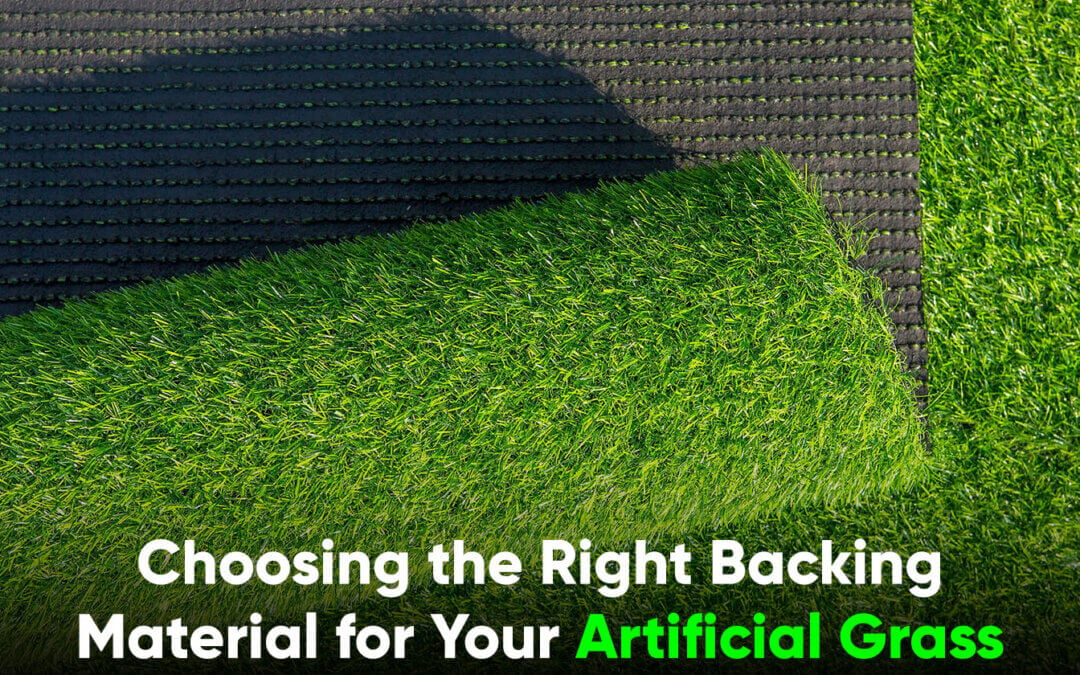For many homeowners in Orlando thinking of landscaping, artificial grass installation is a serious consideration. While focusing on color, texture, and quality of the turf, an aspect that often slips unnoticed is the backing material. Little known to many, the backing material plays a critical role in the longevity and performance of the artificial grass. Understanding the types of backing material and their role can help you make an informed choice, ensuring your artificial lawn lasts longer and stays looking fresh all year round.
Understanding the Backing Material
The backing is the material found beneath the artificial grass fibers. The choice of primary and secondary backing materials help create a durable base. The primary backing serves as the material where artificial grass fibers are tufted or sewn in. The secondary backing is applied afterwards to add stability and reinforce the grass blades, keeping them intact even with heavy foot traffic.
Primary and Secondary Backings: Serving Vital Roles
The primary backing, typically made from polypropylene, acts like the woven fabric in a carpet, providing the initial stability and dimension to the artificial grass. A durable primary backing can handle the intense process of tufting and keep a good grip on the grass fibers.
The secondary backing comes into play once the grass fibers are sewn into the primary backing. Materials such as latex or urethane are used to coat the back, binding the grass fibers and primary backing together. This increases the overall turf durability and ensures your artificial grass can withstand all-day play sessions or outdoor parties.
Latex vs. Urethane: A Close Comparison
Latex backing is cost effective and offers a substantial grip, making it a popular choice. However, it is sensitive to water and needs proper drainage. Conversely, urethane backing is less water-sensitive but more expensive. When it comes to residential use, considering Florida’s unique climate and the likelihood of heavy use, urethane often outperforms latex in the long run due to its superior durability and moisture resistance.
Eco-friendly Backings: A Sustainable Option
As sustainability becomes a major focus, homeowners may prefer eco-friendly backings. These are made of materials that are recyclable, reducing both environmental impact and carbon footprint. A popular eco-friendly choice is a backing made from sugar cane, known to be as durable as traditional options.
Choosing the Right Artificial Grass Backing
While picking your artificial grass backing, factors like climate, usage, and budget can influence your decision. Orlando’s humid subtropical climate requires a backing material that is moisture-resistant, like urethane. High-traffic areas demand stronger backing for enhanced durability, while budget considerations may lean towards cost-effective yet reliable options.
Don’t Overlook the Value of your Backing Material
As a homeowner, understanding each element of your artificial turf, including backing materials, propels you towards making an informed choice. By considering the right type of backing material, you are not only ensuring a lush, flawless artificial grass installation but also a worry-free outdoor experience for many years. Always factor in the primary backing, secondary backing, materials used, and the climatic conditions of Orlando when making your choice.
At Orlando Artificial Grass Pros, we can guide you through the decision-making process and ensure you choose the best solution for your needs. We invite you to call us at 408-317-0931 to learn more or book a free consultation and complimentary quote for your project.

